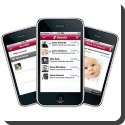 Multimedia Messaging Service, or MMS, is a standard way to send messages that include multimedia content to and from mobile phones. It extends the core SMS (Short Message Service) capability that allowed exchange of text messages only up to 160 characters in length.
Multimedia Messaging Service, or MMS, is a standard way to send messages that include multimedia content to and from mobile phones. It extends the core SMS (Short Message Service) capability that allowed exchange of text messages only up to 160 characters in length.
The most popular use is to send photographs from camera-equipped handsets, although it is also popular as a method of delivering news and entertainment content including videos, pictures, text pages and ring-tones.
The standard is developed by the Open Mobile Alliance (OMA), although during development it was part of the 3GPP and WAP groups.
MMS messages are delivered in a completely different way from SMS. The first step is for the sending device to encode the multimedia content in a fashion similar to sending a MIME e-mail (MIME content formats are defined in the MMS Message Encapsulation specification). The message is then forwarded to the carrier’s MMS store and forward server, known as the MMSC. If the receiver is on another carrier, the relay forwards the message to the recipient’s carrier using the Internet.
Once the MMSC has received a message, it first determines whether the receiver’s handset is “MMS capable”, that is it supports the standards for receiving MMS. If so, the content is extracted and sent to a temporary storage server with an HTTP front-end. An SMS “control message” containing the URL of the content is then sent to the recipient’s handset to trigger the receiver’s WAP browser to open and receive the content from the embedded URL. Several other messages are exchanged to indicate status of the delivery attempt.[6] Before delivering content, some MMSCs also include a conversion service that will attempt to modify the multimedia content into a format suitable for the receiver. This is known as “content adaptation”.
If the receiver’s handset is not MMS capable, the message is usually delivered to a web based service from where the content can be viewed from a normal internet browser. The URL for the content is usually sent to the receiver’s phone in a normal text message. This behavior is usually known as the “legacy experience” since content can still be received by a phone number, even if the phone itself does not support MMS.
The method for determining whether a handset is MMS capable is not specified by the standards. A database is usually maintained by the operator, and in it each mobile phone number is marked as being associated with a legacy handset or not. It can be a bit hit and miss since customers can change their handset at will and this database is not usually updated dynamically.
 Kids Portal For Parents India Kids Network
Kids Portal For Parents India Kids Network

